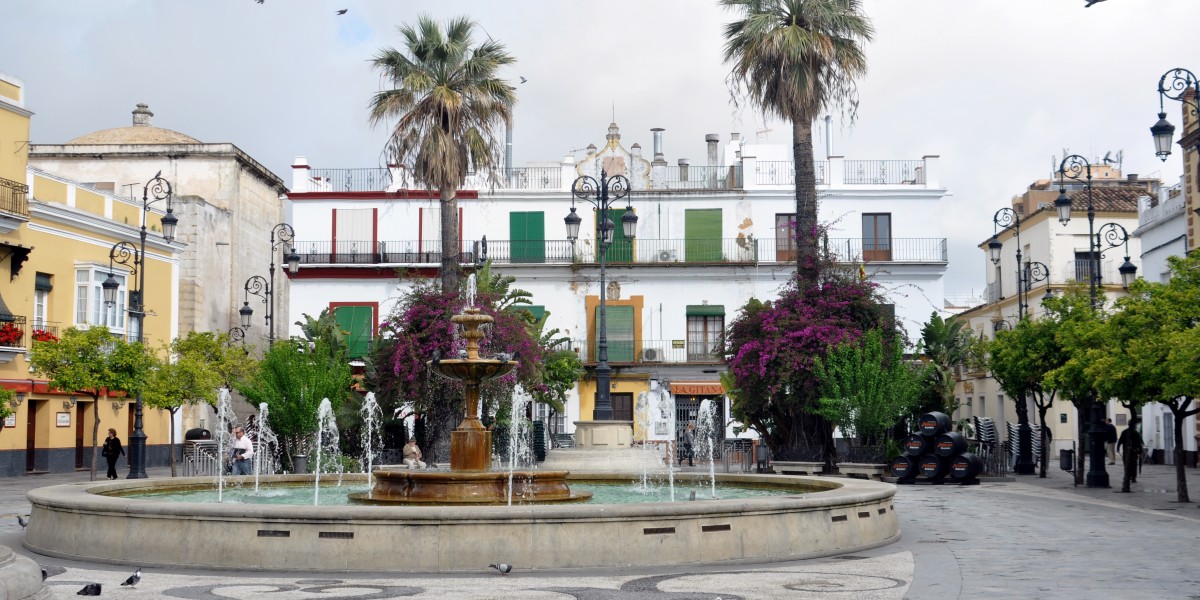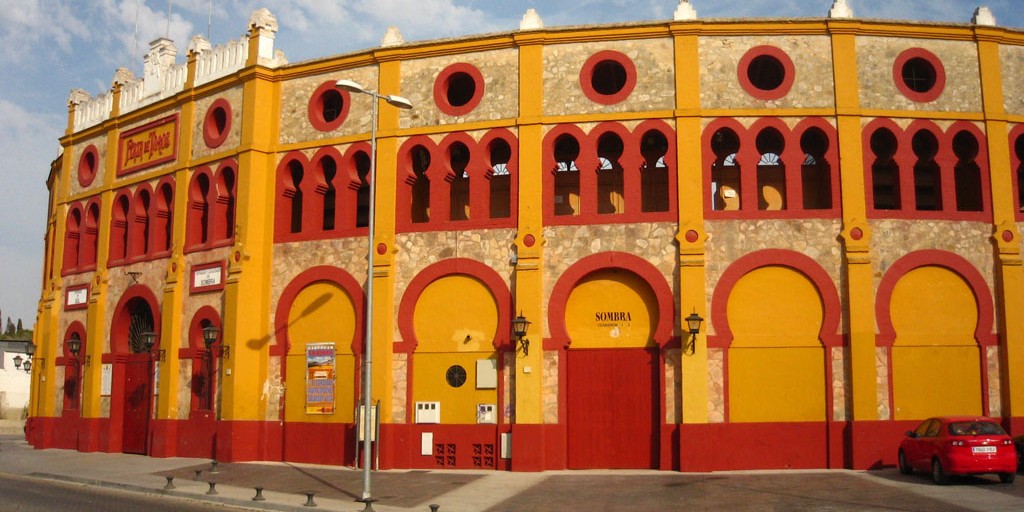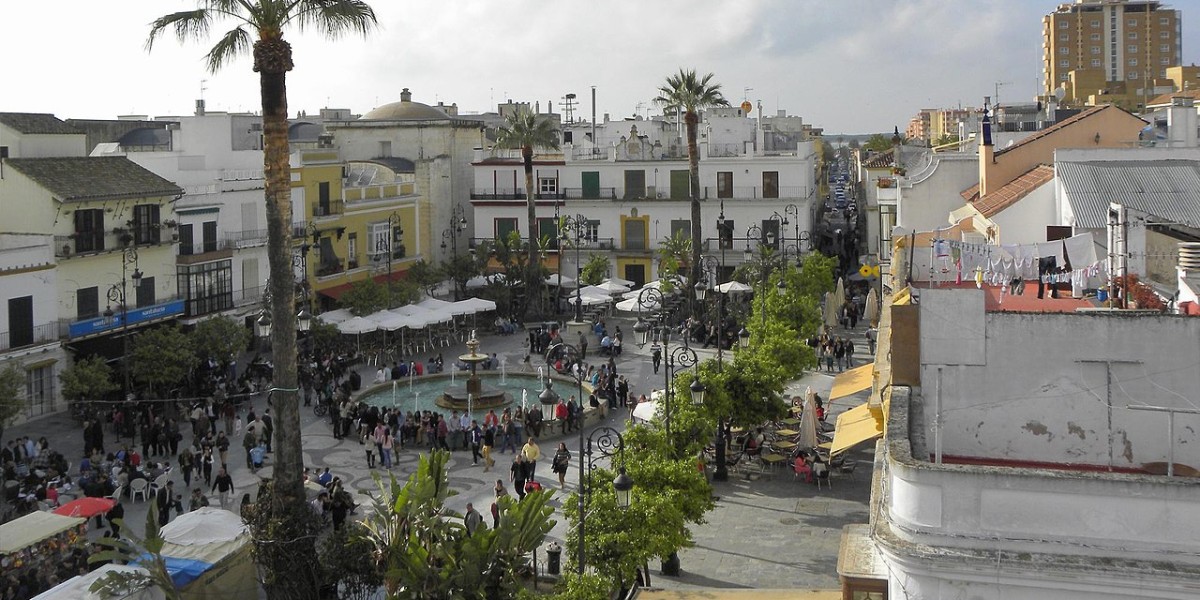
Perched at the wide-open mouth of the Guadalquivir River, Sanlúcar de Barrameda is a town of about 70,000. It's spread along some of the flattest, softest sands on the Costa de la Luz. Set between the Atlantic and the protected wetlands of Doñana, its streets hold echoes of centuries past, picture Moorish watchtowers, the elegant Orleans-Borbón Palace, and the imposing Santiago Castle, looking out over the town since the 15th century.
Sanlúcar is as much about flavour as history, famed across Spain for its crisp manzanilla sherry, langostinos hauled fresh from local waters, and the bustling tapas life along the riverfront in Bajo de Guía. Living in Sanlúcar de Barrameda means life flows at the gentler pace of the tides, with horse races on the beach each August, seafood feasts that last all afternoon, and evenings that ease seamlessly into the soft Atlantic dusk.
What is Sanlúcar de Barrameda like?

Life in Sanlúcar revolves around its lively plazas, morning markets, and long evenings with friends under the shade of orange trees. The town is compact and easily explored on foot, with most days shaped by chats with neighbours, fish fresh off the boats, and impromptu gatherings at bustling local bars.
Every August, the sands liven up for the legendary Sanlúcar de Barrameda horse races, hooves kicking up spray as locals and visitors gather for the event. Yet outside those few electric nights, the town slips back into a state of calm. In winter and spring, you find quiet walks along Doñana’s edge, seafood lunches on near-empty promenades, and that gentle sense of being on the edge of something large and blue.
Pros and cons of living in Sanlúcar de Barrameda

Living in this part of Spain certainly comes with some perks:
- Beautiful beaches and direct access to Doñana National Park
- Outstanding local gastronomy, especially seafood and sherry
- Mild weather that’s ideal for year-round outdoor living
- Lower cost of living than many larger cities
However, like all places, there are downsides:
- Fewer international schools and amenities for young expat families
- Limited nightlife outside festivals and summer
- Gets very busy in summer, so peace and quiet can be hard to find.
Cost of living in Sanlúcar de Barrameda

Sanlúcar has always been a town where you can live well without breaking the bank, and the current numbers back that up. Day-to-day costs stay low thanks to cheap local transport and the town’s walkable layout, so you won’t end up spending much just getting about.
As of April 2025, property prices averaged around €2,004 per m². This is notably easier on the wallet than in neighbouring Cádiz, where the average is €3,030 per m². Renting an apartment in Sanlúcar de Barrameda starts from around €550 per month.
Eating out is pleasantly affordable too—a simple meal for two at an unfussy local spot will run about €30, while a well-poured glass of beer or a caña is reliably priced around €2.50. That morning coffee at your usual bar usually costs €2 or less, making it all too easy to fall into the routine of lingering over breakfast each day.
Where to live or stay in Sanlúcar de Barrameda

Choosing a base in Sanlúcar is a bit like picking your spot on the sand. Each patch has its own quiet routine, and none is ever too far from a salty breeze or a plate of prawns.
Centro (Town Centre)
Centro is Sanlúcar’s beating heart, all wide plazas and slim, shaded streets. It’s where you’ll find the market buzzing from early in the morning, tapas bars spilling out onto cobbles, and clusters of neighbours catching up in the shadow of the old churches. Living here suits those who want to be part of everything, with fiestas on your doorstep and nowhere more than a short walk away. The town’s squares, Plaza del Cabildo and Plaza San Roque, provide a daily stage for gossip and people-watching.
Barrio Alto
Up on the gentle rise overlooking town, Barrio Alto has a more residential feel, peppered with faded palaces, orange trees, and vistas toward the river. Streets here often slope gently, leading past bodega doors and the old castle walls. It has a sleepier atmosphere than the centre, but all its sights are easily within reach. Sunsets from up here are slow and golden, with church bells your nearest background noise.
Bajo de Guía
A favourite for its seafood scene and riverside energy, Bajo de Guía hugs the water’s edge just north of town. Restaurants stretch along the promenade, drawing a lively crowd in summer. Mornings unfold with fishermen and cyclists, while afternoons are for lingering over long lunches with Doñana in full view across the water.
La Jara
La Jara sits on the edge of town, a mostly residential neighbourhood stitched together by quiet avenues, gardens, and clusters of low-rise homes. There’s space here, less rush, and all the beach you could ask for, just a short stroll away. It’s ideal for families or anyone seeking the gentle side of coastal living, however, it is the most expensive neighbourhood to buy property in Sanlúcuar.
Bonanza
Tucked away by the mouth of the river, Bonanza is Sanlúcar’s working port, with an old-school community vibe and a salty tang in the air. Life here is shaped by the rhythm of the tide, the chatter of fishermen, and the sight of boats rocking at anchor. You’re treated to a panorama of marshland and estuary that feels miles from the busy squares.
Things to do in Sanlúcar de Barrameda

There’s no shortage of things to do in Sanlúcar de Barrameda if you’re looking for both the iconic and the quietly local. Start with a wander through the Barrio Alto, taking in sights like the Santiago Castle and the airy Orléans-Borbón Palace gardens.
Down by the river, the Bajo de Guía district is perfect for slow afternoons—think beers and seafood beside the water, with sunset watching a must. For nature lovers, ferries cross to the wilds of Doñana National Park, while foodies can snack their way around the Mercado de Abastos or hop from bar to bar for local langostinos and manzanilla.
Sanlúcar de Barrameda horse riding
Sanlúcar is famous for its horsey heritage, with the summer horse races on the beach bringing the whole town and plenty of visitors together for two weekends every August. Outside of the big event, riding schools and stables in the area offer horse riding lessons, giving you the chance to trot along the sand with Atlantic views in the background. It’s worth asking around the stables by La Jara or the riding routes near Doñana for a taste of this unique local tradition.
Best restaurants Sanlúcar de Barrameda
Sanlúcar is a foodie’s dream, especially if you love seafood and Andalusian flavours. Try Casa Bigote in Bajo de Guía for a classic sit-down meal with fresh fish and an unbeatable view. Alternatively, stroll to Taberna Cabildo for a more laid-back vibe and top-notch tapas. For the true Andalusian tapas experience, make your way to Casa Balbino and feast on countless local dishes.
For modern touches, Avante Claro mixes creative plates with a smart setting right on the river. Locals also swear by Barbiana, tucked behind the main square—ideal for trying tortillitas de camarones and a glass of crisp manzanilla.
Best breakfast in Sanlúcar de Barrameda
Start your day like the locals with breakfast by the port at Cafetería Puerto Duquesa, known for its cakes and pastries. Or head to Lumiere for good coffee and avo on toast. You'll find plenty of local cafés serving up molletes with olive oil and tomato - a must for a true Andalusian breakfast.
Living in Sanlúcar de Barrameda vs. living in Chipiona

Sanlúcar and Chipiona both line the Costa de la Luz and each has its own personality. Sanlúcar is bigger, with a deeper historical feel, a bustling food scene, and its unique connection to the river and sherry bodegas. Chipiona, just up the coast, has a slightly more laid-back resort vibe, known for its long stretches of sandy beach and iconic lighthouse. While Sanlúcar tends to be livelier year-round, living in Chipiona means sharing the beach with Spanish holidaymakers in summer. Cost of living is similar, though seasonal rentals in Chipiona might be cheaper outside peak months.
Other places to consider if looking to relocate to this part of Andalusia are the inland town of Jerez de La Frontera, or the city of Cadíz itself if you fancy somewhere a little bigger.
